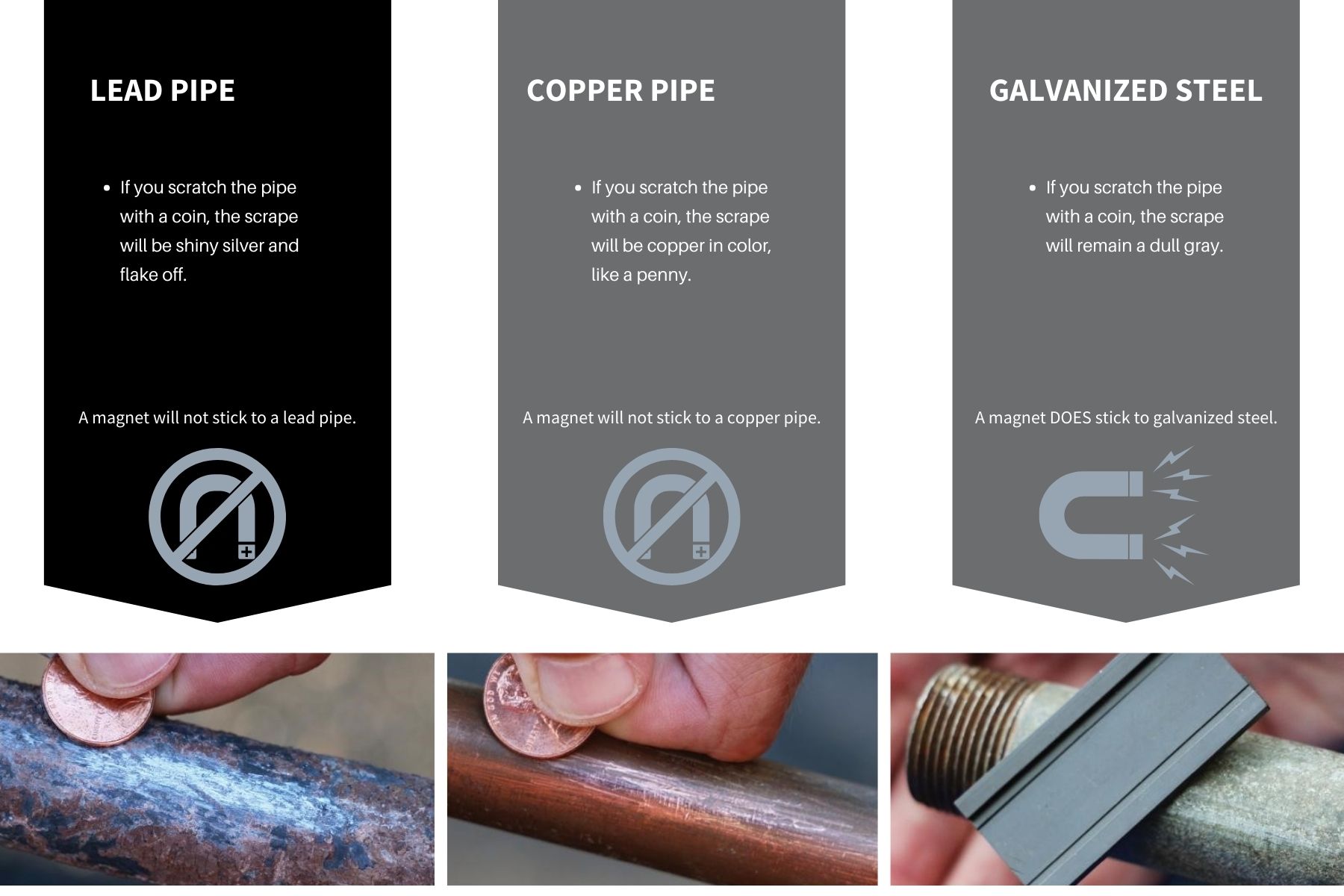The Federal EPA has issued an update to the Lead and Copper Rule with a requirement for all public water utilities to submit a Lead Service Line (LSL) Inventory. This requirement brings forth an era of exciting possibilities for communities to safeguard the health and safety of their water supply!
The EPA’s Lead and Copper Rule was introduced in 1991 to address health risks posed by plumbing supplies containing lead and copper. The most recent revision requires public water systems to establish an LSL Inventory, enabling identification of customer service lines and a plan for fixing any issues. The revised LCR also requires tap sampling, better communication with customers and schools, and stricter requirements for replacing lead service lines.
This innovative approach ensures that communities can swiftly address potential hazards, prevent public health concerns, and establish a sustainable and reliable water infrastructure for many years to come.
Lead enters drinking water when plumbing materials that contain lead corrode, especially where the water has high acidity or low mineral content that corrodes pipes and fixtures. The Environmental Protection Agency (EPA) requires all community water systems to prepare and deliver an annual water quality report called a Consumer Confidence Report (CCR) for their customers by July 1 of each year and alert you if there is a problem with your drinking water. If your water comes from a well or private water supply, you can check with your health department or with nearby water utilities that use groundwater for information on contaminants in your area.
Health Effects of Lead
Exposure to lead in drinking water can cause serious health effects in all age groups. Infants and children can have decreases in IQ and attention span. Lead exposure can lead to new learning and behavior problems or worsen existing learning and behavior problems. The children of women who are exposed to lead before or during pregnancy can have increased risk of these negative health effects. Adults can have increased risks of heart disease, high blood pressure, and kidney, or nervous system problems.
A family doctor or pediatrician can perform a blood test for lead and provide information about the health effects of lead. State, city, or county departments of health can also provide information about how you can have your child’s blood tested for lead. The Centers for Disease Control and Prevention (CDC) recommends public health actions when the level of lead in a child’s blood is 3.5 micrograms per deciliter (µg/dL) or more. Please visit the CDC’s website for more information.
https://www.cdc.gov/lead-prevention/communication-resources/know-the-facts.html
STEPS TO REDUCE LEAD IN DRINKING WATER
Below are recommended actions that you may take, separately or in combination if you are concerned about lead in your drinking water. The list also includes where you may find more information and is not intended to be a complete list or to imply that all actions equally reduce lead in drinking water.
Use your filter properly. Using a filter can reduce lead in drinking water. If you use a filter, it should be certified to remove lead. Read any directions provided with the filter to learn how to properly install, maintain, and use your cartridge and when to replace it. Using the cartridge after it has expired can make it less effective at removing lead. Do not run hot water through the filter. For more information on facts and advice on home water filtration systems, visit EPA’s website at https://www.epa.gov/water-research/consumer-tool-identifying-point-use-and-pitcher-filters-certified-reduce-lead.
Clean your aerator. Regularly remove and clean your faucet’s screen (also known as an aerator). Sediment, debris, and lead particles can collect in your aerator. If lead particles are caught in the aerator, lead can get into your water.
Use cold water. Do not use hot water from the tap for drinking, cooking, or making baby formula as lead dissolves more easily into hot water. Boiling water does not remove lead from water.
Run your water. The more time water has been sitting in pipes providing water to your home, the more lead it may contain. Before drinking, flush your home’s pipes by running the tap, taking a shower, doing laundry, or doing a load of dishes. The amount of time to run the water will depend on whether your home has a lead service line or not, as well as the length and diameter of the service line and the amount of plumbing in your home.
Learn about construction in your neighborhood. Contact the Water Department to find out about any construction or maintenance work that could disturb your service line. Construction may cause more lead to be released from a lead service line or galvanized service line if present.
Have your water tested. Note that a water sample may not adequately capture or represent all sources of lead that may be present. For information on sources of lead that include service lines and interior plumbing, please visit https://www.epa.gov/ground-water-and-drinking-water/basic-information-about-lead-drinking-water#getinto
HOW DO I KNOW IF MY SERVICE LINE IS LEAD?
Lead service lines are generally a dull gray color and are very soft. You can identify them easily by carefully scratching them with a key. If the pipe is made of lead, the area you’ve scratched will turn a bright silver color.
DO NOT use a knife or other sharp instrument and take care not to puncture a hole in the pipe!
Note: Galvanized piping can also be a dull gray color. A strong magnet will typically cling to galvanized pipes but will not cling to lead pipes.
Lead service lines can be connected to the residential plumbing using solder and have a characteristic solder “bulb” at the end, a compression fitting, or another connector made of galvanized iron or brass/bronze.

